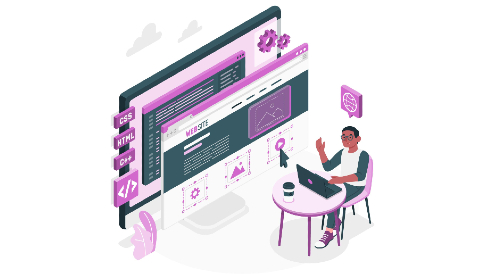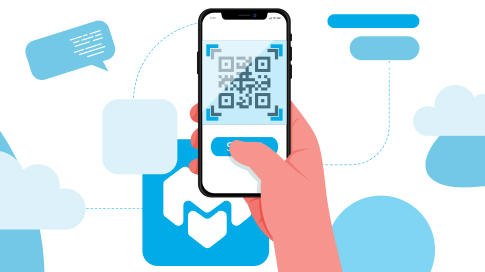Site Security – What Are the Threats and How To Avoid Them
Maintaining site security is one of the most difficult tasks for every company. Leakage of customer personal data, financial loss, damage to reputation, and fines from the competent authorities are just some of the potential problems from cyberattacks. According to statistics from Verizon the largest mobile operator in the United States by subscriber base, in 2021, 85% of security breaches were made by people directly, 36% by phishing, which is 11% more than last year, and 10% are related to the impact of programs that extort money, which is twice as much as in 2020. Let’s take a look at what are the main threats to site security and how to avoid them.
Definition
A cyberattack is an unauthorized, deliberate attempt to enter the security system of a company’s website with the aim of damaging or stealing valuable information or other types of confidential data. One person or a group of people can organize and perform it.
Site Security – Types of Security Threats
There are several types of site security threats.
- “Infected” software is the most popular type of attack among cybercriminals. It can most often be picked up by following a link from an email message or any site on the network. It consists of many viruses, worms, and ransomware that, after installing the software, can block access to any company documents, destroy the entire system and extract personal data.
- Ransomware – they are embedded in malware, after the installation of which, the attacker encrypts/blocks the company’s data and can demand a monetary reward for their recovery.
- Phishing is the distribution of letters allegedly sent by official sources. They contain a link that automatically installs malware or leaks confidential data by clicking on it.
- Spear phishing is a form of phishing for only high-ranking employees who are responsible for data storage. For example, managers or system administrators.
- Denial of Service (DDoS) is an attack characterized by deliberate traffic congestion, after which the system is unable to cope with requests. The threat is most often carried out from several infected devices at once.
- SQL injection is a cyberattack using malicious code that infiltrates unprotected parts of the system. The criminal then deletes/modifies/steals sensitive data.
- A “zero-day” attack occurs during a period of system vulnerability. While the company’s employees are trying to eliminate it, the criminals intercept the data.
- Persistent threats (APT) – arise as a result of a long stay in the system due to untimely calculations.
- DNS attack – exploiting the domain name system and its vulnerabilities. Cybercriminals redirect site visitors to DNS Hijacking (malicious sites) and then redirect back (DNS Tunneling).
- Viruses – they have a huge number of varieties. Their main task is to attach to the host or directly to the system, and then spread out to all the devices available in the company.
Choosing a DNS provider with strong security features, like DNSSEC (DNS Security Extensions), is crucial for safeguarding your website against DNS attacks such as spoofing and cache poisoning. DNSSEC helps authenticate and verify DNS responses, ultimately enhancing your site’s security.
The number of new threats is growing every day. The main trigger for this was the 2020 pandemic, which has become a real incentive for larger-scale attacks with sophisticated schemes.
Site Security – Sources of Attacks
To repel an attack, you should know all types of attacks in the face and learn to select methods to deal with them. The most common sources of threats:
- the state of the company registration or any other – these are the most difficult to repel attacks because the best spies and big finances are in their execution;
- groupings – for large fraudulent earnings and use all possible types of attacks for this;
- hackers – possess the skills to influence with the help of various types of threats and use them for profit, they also create new types;
- terrorist groups are a threat to national security, they penetrate the most large-scale infrastructures to strike;
- hacktivists – pursue political, not financial goals, harming those organizations that do not share their national idea;
- corporate spies – direct attacks aimed at destroying or undermining a competitor’s reputation;
- clients of the company – even during banking operations, the client can become a threat to the security of the system, to avoid this, use S-PRO’s guide on SCA – a reliable authentication system.
Also, intruders can be insiders – employees of the company itself, who have access to the system and strike for personal gain or financial gain.
How to Protect Your System
According to statistics for 2020, the average global cost of data breaches was $ 3.86 million. This is 1.5% less than in the same period in 2019. The maximum amount was $ 4 million in 2016. This does not mean that it is easier to resist attacks by cybercriminals every year; rather, more and more new tools are emerging to fight. The most optimal ones:
- Insider Threats Program. A working way to protect your data from theft and destruction by your own employees. Each department and team member should have limited access to certain information.
- Employee training. Organization of the training process and constant training for employees will minimize the number of completed attacks.
- Regulatory requirements. Standard standards for organizations change at an enviable frequency. You should constantly adjust to them, excluding the possibility of exposure to criminals.
- Data backup. Make a schedule for backing up your site data. Even in the event of a cyberattack, you can always recover information or you will not be afraid to lose it.
- The regular software and system updates. The more optimization there is the fewer chances that intruders will risk attacking it.
- Simulated phishing. This is a great opportunity to train your employees. A drill will help you hone your skills in repelling cyberattacks.
The more and more often the company prepares for a cyberattack, the greater the chances of winning in the fight against cybercriminals.
Site Security – Conclusion
There are more and more types of network security threats every day. It is important to know everything about cyberattacks in order to be able to repel them. Don’t rely on old virus and cyberattack protection systems. You need to improve your own cybersecurity protection and stay one step ahead of criminals.




Leave a Reply